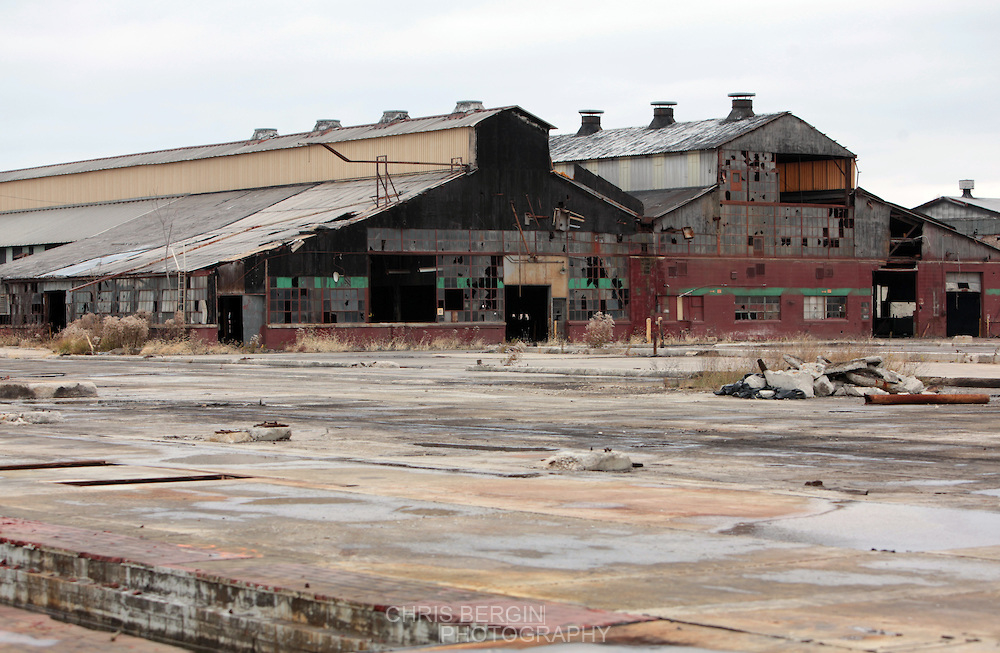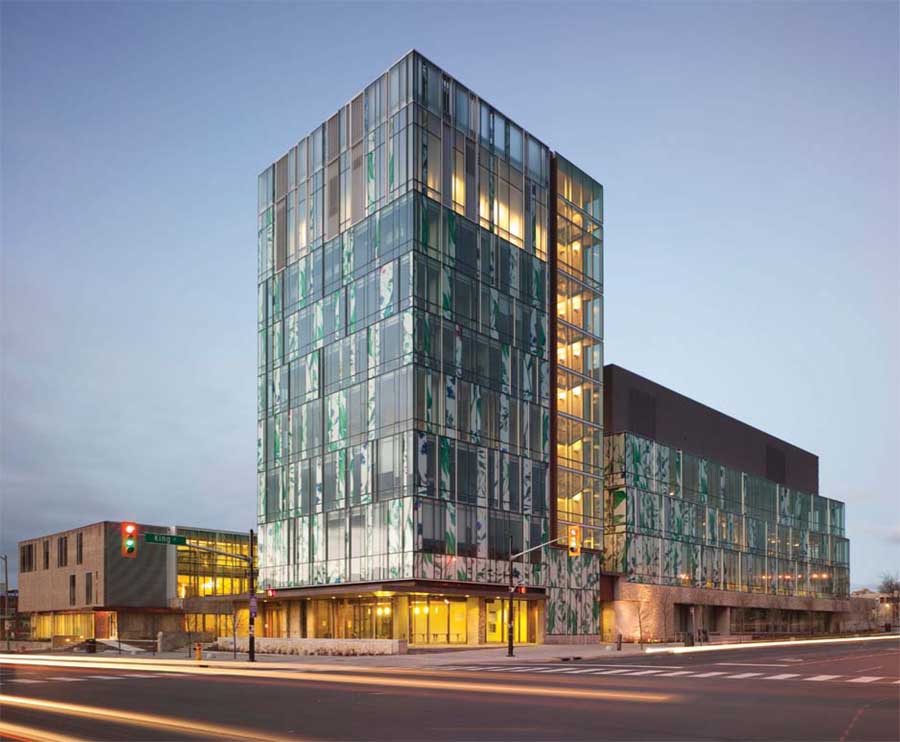Globalization and the Economic Geography of the GGH Story Map
Story by Alexandra Chernoff-
Secondary industry jobs have been moved offshore to countries such as Mexico, China, India, Bangladesh, and Vietnam
The closures and relocations of secondary industry work have been a huge contributor to the 200,000 job loss in the Toronto region and the GGH, 300,000 job losses in Ontario, and 600,000 in Canada since 2001
At the same time, the quaternary industry has grown and more people are working in markets developing: new products and industries, computers and communications technologies, software, and biotech
Some of the fastest growing industries in Ontario are computer systems design, financial investment services, software developers, engineering services, and telecoms
GGH employment data shows that assembly-line workers, machine operators, secretaries, and clerical functions have seen job loss since 2001
At the same time, the areas that have seen huge job growth since 2001 are financial and investment analysts, computer and information systems analysts, and engineers
Level C jobs (secondary industry) are being relocated, offshored, or automated
From 2001-2011, downtown Toronto’s employment sector grew by about 42,000 core jobs
The employment sector increased in jobs in areas such as media design and architecture, digital industries, finance, business services, tourism, arts, research institutions, engineering and information, and communications technology
Downtown core represents 17.5% of core employment in the GGH as of 2011
The airport megazone is the second largest concentration of employment in all of Canada after Toronto representing nearly 300,000 jobs which are more than the central business districts of Calgary, Montreal and Vancouver individually
The three megazones together represent 543,000 jobs
Downtown Toronto represents approximately 464,7000 jobs
More than 80% of the jobs in these megazones are core employment jobs compared to 62% in the GGH
From 2001-2011 there has been a 27% increase in jobs in SKIDs (35,500 jobs)
Downtown Toronto - Financial District (Front Street, Yonge Street, University Avenue, Queen Street)
Three megazones
Pearson International Airport in Mississauga (Highway 409 and Highway 427 Intersection)
Highway 404/407 interchange
The intersection of Highway 400/407 east to Keele Street
SKIDs (Suburban Knowledge-Intensive Districts)
2 SKIDs in Mississauga (Highway 401 and Highway 403 Intersection)
1 SKID in Markham (Highway 404 and Highway 407 Intersection)
1 SKID in Waterloo (Highway 7 and Highway 8 Intersection)
1 SKID in Oakville (Highway 403 and Queen Elizabeth Way Intersection)
The rise of the creative class and the growing quaternary industry have impacted the GGH socially, environmentally, economically, and politically. An environmental impact that economic development and globalization have on the GGH is the use of more cars. The three megazones are located along the 401 highway and therefore can only be accessed by car. As a result, there are 1 million car trips daily which have many associated environmental impacts. More cars mean more carbon dioxide. Furthermore, if there are 1 million car trips happening daily there is likely to be some traffic and travel congestion at some point throughout the day which means that at times, cars are sitting idle, and polluting our air. In addition, more cars mean a higher demand for oil. This creates an increased demand for the production of oil in the Alberta tar sands. In 2011, the tar sands were producing 1.8 million barrels of crude oil per day. This resulted in 47.1 million metric tons of carbon emissions being pumped into the atmosphere. Oil production, oil transportation, and then the use of oil in fossil fuel-dependent vehicles drives our greenhouse gas emissions through the roof, furthering the already life-threatening effects of climate change and global warming. An economic impact that economic development and globalization has had on the GGH is the mass job loss across the secondary industry. A Campbell Soup factory that had been open for 87 years in south Etobicoke has closed due to globalization and the moving of factories and production plants to offshore locations. Since 2001, there have been 300,000 job losses in the secondary industry across Ontario and 600,000 in Canada. The types of jobs that are being lost are assembly-line workers, machine operators, secretaries, and clerical functions. While at the same time, jobs in markets developing: new products and industries, computers and communications technologies, software, and biotech have grown substantially. The problem arises not just in the job loss but also in the fact that employees who lose their jobs in the secondary industry are left trying to find a job often without adequate education. For families who have planned their lives around a certain salary, a change can be detrimental to their lives. A social impact that economic development and globalization has had on the GGH is that people have to be in school for longer in order to get a steady job in our current job market. 100 years ago you could get a job with a high school diploma and now that is simply not the case. Even now, a university undergraduate degree could not get you a job in today’s market which speaks to just how high the level of education that is required. Another social impact that economic development and globalization on the GGH is the cost of living and the search for affordable housing. The financial district in downtown Toronto has some of the highest rent and buying costs in the world. On the list of 214 most expensive cities to live in globally, Toronto is number 61 on the list. Countless people are being priced out of the city and the homeless population is growing because people simply cannot keep up with the cost of living in this city. A political impact that economic development and globalization has had on the GGH is the pressure on the municipal and provincial government to update and maintain transportation services across the GTA especially, but also including the upkeep of highways across the Greater Golden Horseshoe. Proper transportation is what allows people to get to and from work every day and there is tremendous pressure on the government to maintain a high quality of transportation services for all of those who need it. However, the issue that arises is that with population growth slows the development of projects because a greater population is accompanied by increased levels of congestion. The construction of the Metrolinx project has been going on for upwards of 5 years now and to the public eye, it appears as though no progress has been made. This angers people because due to huge amounts of traffic that come from living in a big city, especially one under major construction, it takes longer to get to their destinations at any time of day.
'Hyper-concentration' of jobs occurring in Toronto's downtown, report says. (2018, December 04). Retrieved from https://www.theglobeandmail.com/canada/toronto/article-hyper-concentration-of-jobs-occurring-in-torontos-downtown-report/
Biello, D. (2013, January 23). How Much Will Tar Sands Oil Add to Global Warming? Retrieved from https://www.scientificamerican.com/article/tar-sands-and-keystone-xl-pipeline-impact-on-global-warming/
Factory worker salary in Canada. (n.d.). Retrieved from https://neuvoo.ca/salary/?job=factory worker
Kalinowski, T. (2015, September 24). Eglinton Crosstown to open a year later than expected. Retrieved from https://www.thestar.com/news/gta/transportation/2015/09/24/eglinton-crosstown-to-open-a-year-later-than-expected.html
Keith, E. (n.d.). Toronto's Cost Of Living Is So High That People Making Minimum Wage Can't Afford It. Retrieved from https://www.narcity.com/ca/on/toronto/news/torontos-cost-of-living-is-so-high-that-people-making-minimum-wage-cant-afford-it
Mapping the Toronto regional economy. (n.d.). Retrieved from https://www.neptisgeoweb.org/insights/3
No. 1: Restructuring of urban economies. (2015, May 10). Retrieved from http://metropoleconsultants.com/no-1-restructuring-of-urban-economies/
The changing economic landscape of the GGH. (2018, December 04). Retrieved from http://www.neptis.org/publications/planning-next-ggh/chapters/changing-economic-landscape-ggh
The Regional Economic Structure of the GGH Today. (2015, December 02). Retrieved from http://www.neptis.org/publications/planning-prosperity/chapters/regional-economic-structure-ggh-today



Comments